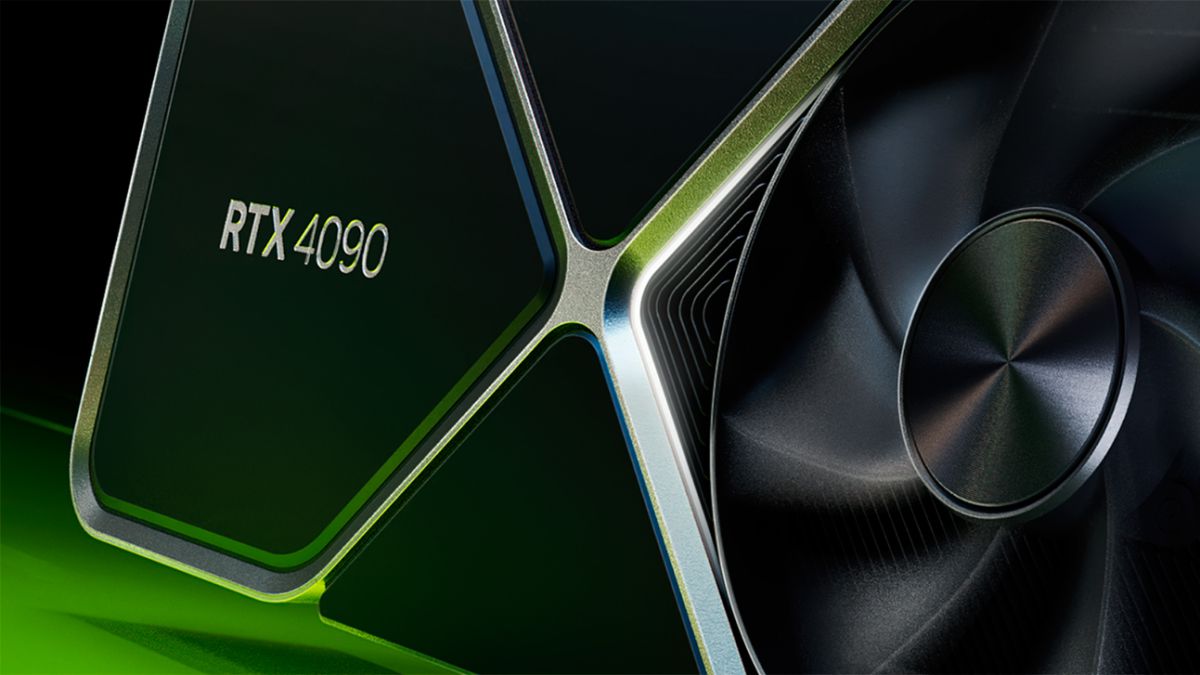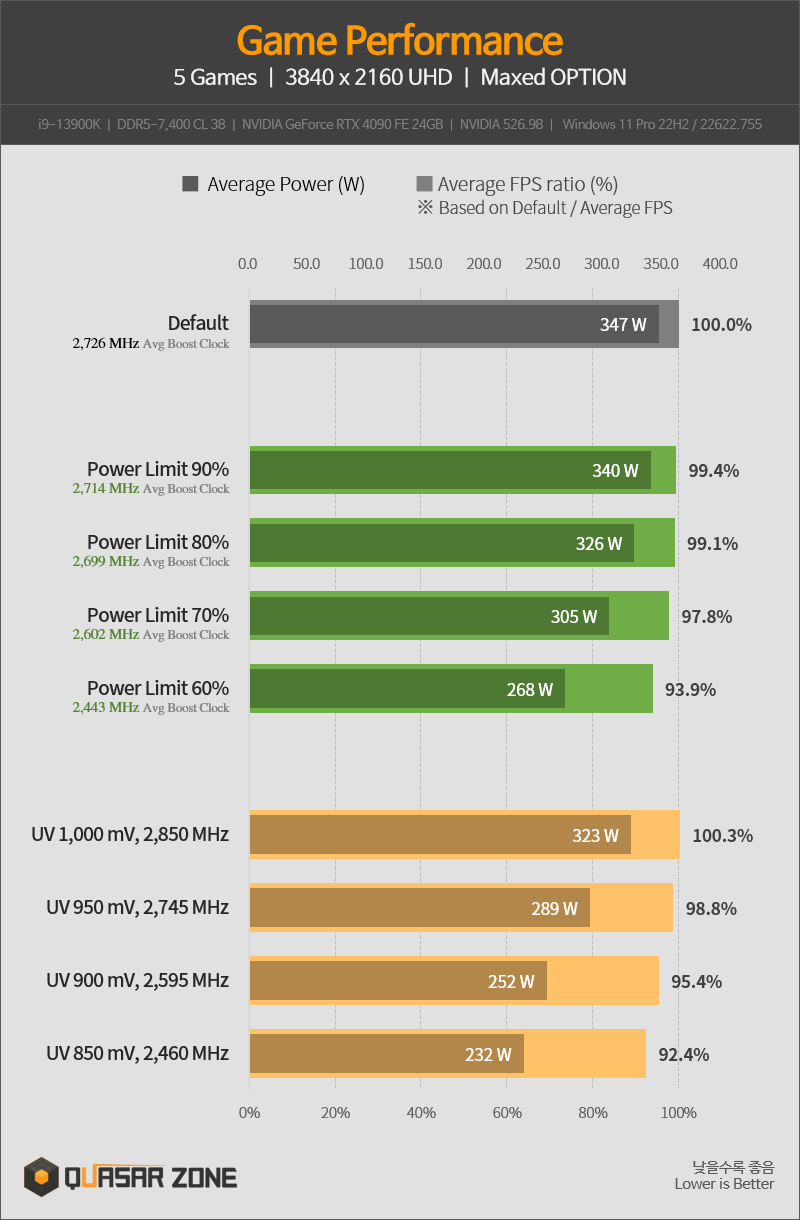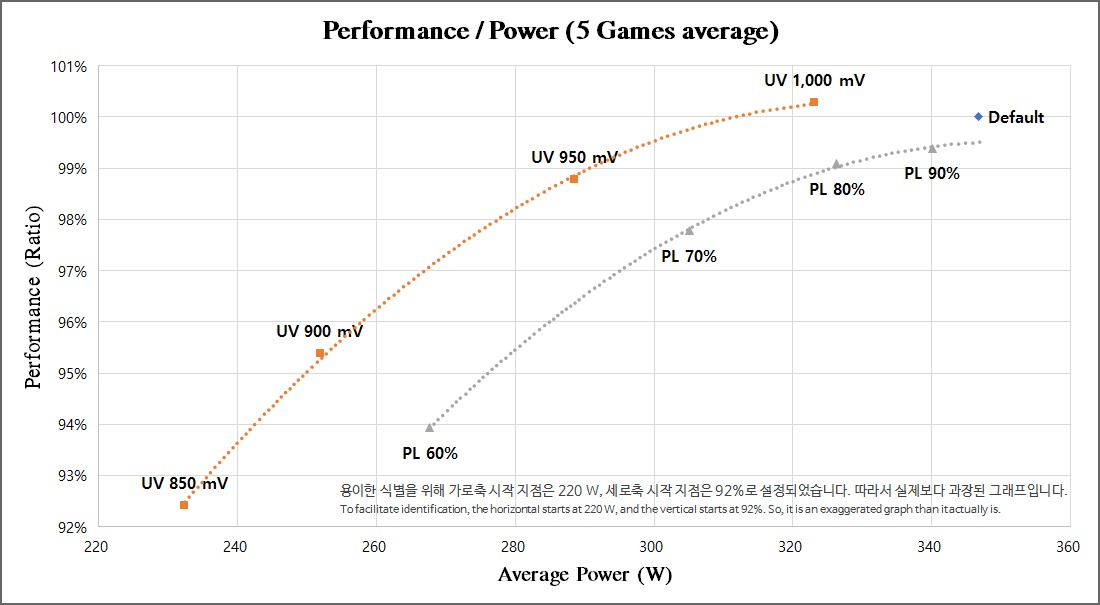NVIDIA RTX 4090 Loses Just 6% Performance At 40% Lower Power

It is not hidden from anyone that undervolting works like magic. While most GPUs benefit from it, the RTX 4090 surprisingly only takes a 6% hit in performance at 40% lower power. Now whether you’d undervolt a 4090 despite paying so much is debatable. But the fact remains. QuasarZone conducted a few tests by lowering the Power Limits and undervolting the 4090 to bring forth the efficiency this GPU holds and we were not disappointed.
RTX 4090 Undervolt
Starting off, undervolting is basically lowering the GPUs voltage which results in lower power consumed. As power is directly related to energy, less amount of heat is produced on undervolting. Besides, semiconductors are susceptible to high voltages so undervolting directly increases the lifespan of your GPU.
Over a course of 5 games, the RTX 4090 showed impressive results on lowering the PL (Power Limit). At 347W of power, the GPU maintained a 100% FPS ratio, which is our reference point.
On dropping the power limit to 90%, the 4090 sustained 99.4% of its performance. The most noteworthy limit here is 70%, where the RTX 4090 still manages to output roughly 97.8% of its performance while consuming almost 50W less.
Now, moving over to undervolting we see that the RTX 4090 is capable of delivering 92.4% of its stock performance at almost 40% less power. Though, undervolts in the range of 0.8–0.85V are seldom hard to reach but still doable for most GPUs. Lower than that and you may end up with a few crashes.

Performance/Power Chart
Based on the chart below, it is safe to assume that Ada is an extremely efficient architecture. Many enthusiasts had the same thought when reviewing the RTX 4080 and the RTX 4090. Despite the ‘4080 fiasco’, these GPUs are indeed much more power efficient than we initially thought.
In addition, undervolting seems to be far better than merely lowering the power limits. Though, the difference does become minimal at the higher end.
- Undervolting | 92.5% Performance at 235W
- Power Limit | 94% Performance at 265W

Conclusion
NVIDIA’s RTX 4000 Mobile GPUs will be interesting to see when compared to AMD’s RDNA3. If all goes well, we may be in for an extremely fierce competition at CES 2023. Pricing still does give a huge edge to AMD, but that’s in the desktop market. The mobile/laptop graphics market is still unknown in terms of pricing, giving NVIDIA the benefit of the doubt.





